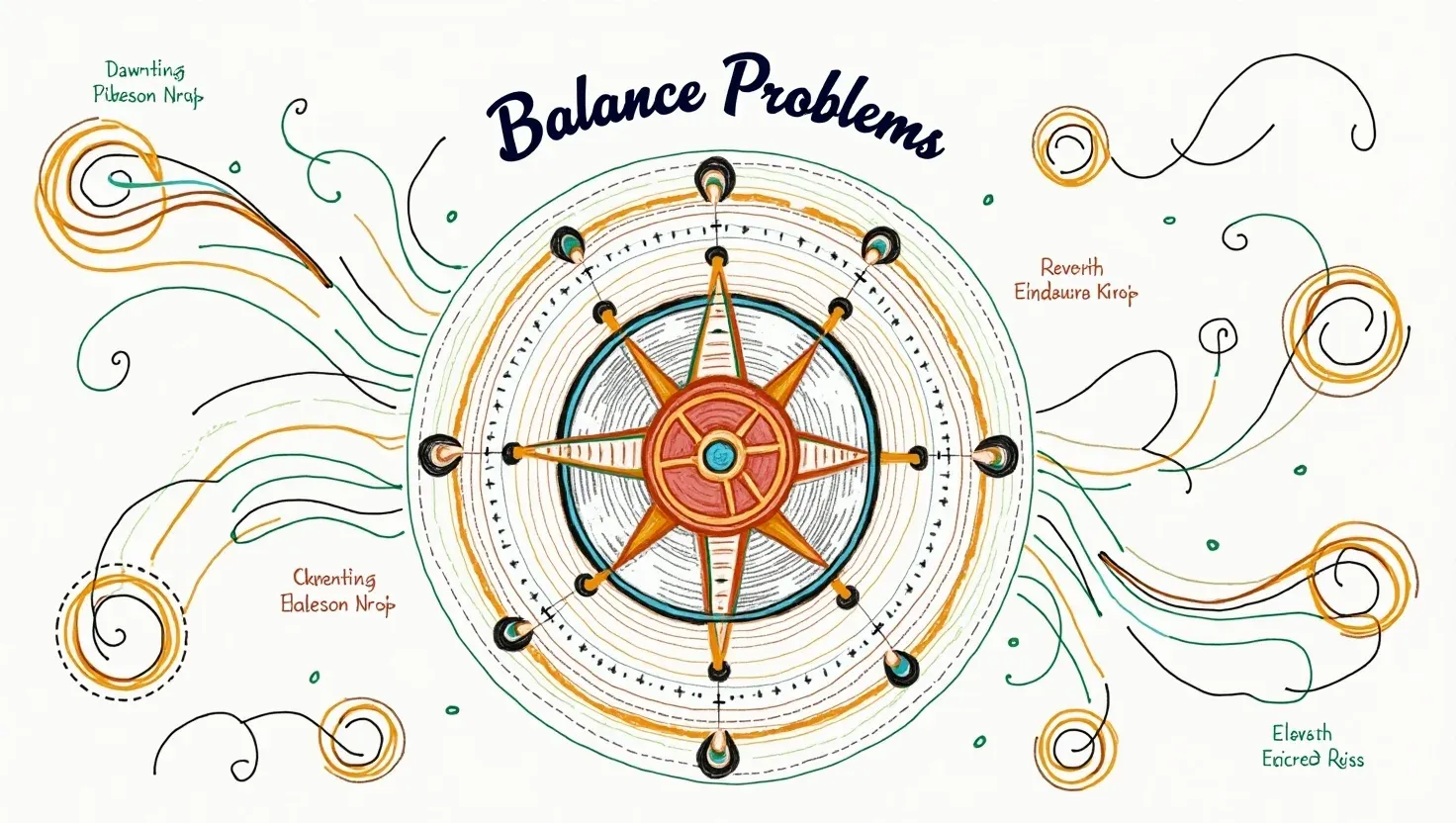Once upon a fog-laden evening, a traveller set out with a map. Yet this map was no ordinary guide – it redrew itself in circles, leaving the traveller wandering endlessly. Every step felt uncertain, as if the ground beneath shifted. This fable captures what many with MS balance problems experience: dizziness, unsteady gait, and unreliable steps that seem to spin us round in circles. And yet, within those circles lies the possibility of drawing new paths – safer, steadier, and full of hope.
Understanding MS Balance Problems
MS balance problems are among the most common symptoms of multiple sclerosis. Damage to the brain and spinal cord can disrupt communication between body and brain, leading to:
- Unsteady gait that makes walking unpredictable.
- Vertigo MS episodes where the world seems to tilt.
- Coordination issues that affect simple daily tasks.
- Shaky walking pattern that increases the risk of falls.
According to the MS Society, the causes of balance problems are varied, ranging from lesions in the cerebellum to sensory loss in the feet. These problems with balance can erode confidence, but understanding them is the first step to regaining stability.
The Hidden Impact of Dizziness and Balance
When MS balance problems appear, independence is shaken. Dizziness, vertigo, and walking instability create fear of moving freely. It’s not just about the physical risk of falling – it’s also about the emotional toll.
Many people report avoiding activities they once enjoyed. This contributes to fatigue and frustration, themes echoed in Fluctuating Symptoms MS, where even good days can suddenly turn difficult.
Recognising that MS can affect your balance is not weakness – it’s wisdom.
Falls: Recognising the Risk Factors
Falls are not inevitable, but the risks are real. MS balance problems increase vulnerability, especially when compounded by fatigue or poor visibility. Common triggers include:
- Poor lighting or cluttered spaces
- Coordination problems that worsen with tiredness
- Sudden vertigo MS spells
- Heat sensitivity and dehydration
This risk is not unique. In A Spoonful of Socks and a Dash of Delight, we saw how paraesthesia can further destabilise footing, making a fall more likely. Recognising these triggers gives you control, and with adjustments, many falls can be prevented.
Putting Safety and Energy Conservation First
Safety doesn’t mean giving up freedom – it means adapting. Practical strategies for MS balance problems include:
- Using railings or mobility aids without hesitation
- Wearing sturdy footwear (slippers are not allies!)
- Rearranging furniture to create clear paths
- Resting before fatigue overwhelms you
This ties directly into Energy Management MS. As the tortoise taught us, pacing is not laziness; it’s making choices that prevent exhaustion and reduce problems with balance.
Energy Conservation Ahead of Pride
Sometimes pride whispers, “You don’t need that stick.” But wisdom replies, “Use it and keep moving.” Choosing energy conservation ahead of pride is key to living with MS instability.
Think of Fatigue Management. The ant’s lesson reminds us that conserving strength prevents bigger setbacks later. With MS, saving energy directly reduces dizziness and walking instability, helping you avoid dangerous moments.
The Importance of an Individualised Approach
There’s no single path for everyone with MS balance problems. The multiple sclerosis foundation and other organisations stress the importance of personalised plans.
Physiotherapists, occupational therapists, and MS nurses can help design tailored programmes focusing on:
- Improving coordination problems
- Reducing unsteady gait
- Exercises that counter dizzy spells MS episodes
- Strengthening posture to limit uncoordinated stride
An individualised approach matters. Whether it’s vestibular therapy, targeted stretches, or adaptive devices, your map should be drawn to suit your needs – not borrowed from someone else’s.
Drawing New Circles – A Fable Reflection
The traveller in the fog realised the map would always draw circles. But by slowing down, pausing to rest, and marking safe routes, those circles became a guide rather than a trap. The lesson is clear: with MS balance problems, it’s not about breaking free of the circle but learning how to walk it safely – until you discover paths that feel like progress.
Frequently Asked Questions
How does MS affect your balance?
MS disrupts signals between brain, spinal cord, and muscles, leading to dizziness, shaky walk, and coordination issues.
How do I fix my MS balance problems?
There’s no single fix, but physiotherapy, balance exercises, mobility aids, and careful pacing all improve safety.
What does MS imbalance feel like?
It often feels like dizziness, spinning sensation, or being pulled to one side. Some describe it as walking on a rocking boat.
What does a MS walk look like?
An “MS walk” may include uneven steps, limping, or sudden pauses. Gait varies, but unstable mobility is often visible.
Conclusion
MS balance problems are a common symptom, but they don’t need to control your life. By recognising triggers, putting safety and energy conservation ahead of pride, and working with professionals on an individualised approach, you can redraw your own map for safer walking and steadier living.
Circles may still appear – dizziness, walking instability, and irregular gait – but within them, you can find strength, support, and surprising new routes forward.
Many individuals with MS struggle not only with dizziness and balance but also with persistent challenges in balance, gait, and fall risk. Effective strategies—ranging from vestibular rehabilitation techniques to customized physiotherapy—can make a significant difference in daily mobility and safety.




